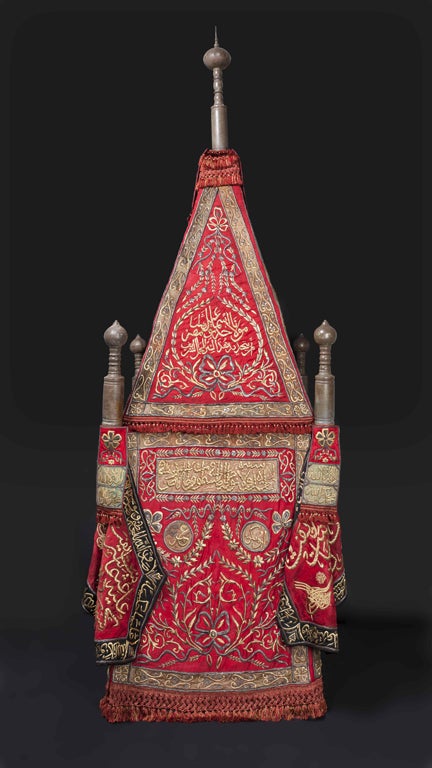Hajj: Journey to the heart of Islam, British Museum, London
Islam's holy of holies – by dhow, steamer or jet plane

Trust the British Museum, under the leadership of Neil MacGregor, to grasp the nettle.
There has rarely been a more pressing need in this country to shed light on Islam, and there has never before been a major exhibition dedicated to Hajj, the pilgrimage to Mecca which is central to the Muslim faith.
Had you been born a Muslim in India or China before the invention of steam travel, you would have been obliged to make this lifetime's journey by sailing ship or dhow. Had you made the trip from a north-African starting point, a caravan of camels would have been your lot. Whatever your means of conveyance to Mecca, a city in an arid part of what is now Saudi Arabia, the trip was perilous. Little wonder Muslims were encouraged to believe they were guaranteed passage to Heaven even if shipwreck, cholera or bandits got them first.
Today, any number of specialist travel companies offer Hajj packages, relatively risk-free. Look up the British Museum's helpful introduction to Hajj on the net and you'll find them jostling for position. For Hajj has begotten a major industry catering to 3 million pilgrims a year, many of whom want guidance in enacting the six days of prescribed rituals. In addition to donning special clothing and getting special haircuts, these include gathering pebbles from a certain place and travelling to another to throw them, in memory of Abraham fending off the devil.
A challenge for the curators of this show is to gauge how much basic background is wanted. Given the average non-Muslim's ignorance of the Five Pillars of Islam, the crash course on caption boards is essential. Spiritual and emotional aspects of pilgrimage are neatly conveyed by photographs of radiant faces and a short film, though more compelling is the diary of a 10-year-old British schoolgirl, inked in a careful hand, describing the moment she first turned her gaze on the Ka'ba, the holy-of-holies granite cube that some Muslims believe was built by Abraham, others by Adam, and which must be circled on foot seven times at the climax of the Hajj.
The logistics of travel over the ages occupy much of the exhibition, absorbing for those interested in manuscript maps, but otherwise dry. More colourful are the accounts of individual pilgrims such as Mansa Musa, king of Mali, who in 1324 travelled to Mecca on horseback preceded by 500 slaves carrying gold staffs, 100 camels carrying gold ingots (distributed to the poor along the way) and a retinue of 60,000 courtiers and servants.
Non-Muslims have never been allowed in Mecca, though some have defied the ban. Among the most intrepid was Sir Richard Francis Burton, who in 1853 disguised himself as an Afghan doctor and Sufi dervish (how, we do not learn), sailed from Southampton to Cairo and joined the Egyptian Hajj, making copious notes for the National Geographic Society. The venture, which he miraculously completed without being unmasked, made him a celebrity back home.
Those expecting roomfuls of gleaming Islamic art may be underwhelmed by this show. Indeed there is fine calligraphy and embroidery, but the thrust of the experience comes in written form and faded photographs, harder to decode. The mysteries of Hajj are not yielded up lightly.
To 15 April (020-7323 8181)
Exhibition Choice
Photographer Eleanor Farmer's Blood: A Circulation of Curiosities explores the red substance both as a life-enhancing force and signifier of death. The works are candid rather than gory, broaching subjects as diverse as open-heart surgery and the beauty of a mosquito viewed under a microscope. At London's Guy's Hospital (to 9 Mar).
Subscribe to Independent Premium to bookmark this article
Want to bookmark your favourite articles and stories to read or reference later? Start your Independent Premium subscription today.

Join our commenting forum
Join thought-provoking conversations, follow other Independent readers and see their replies